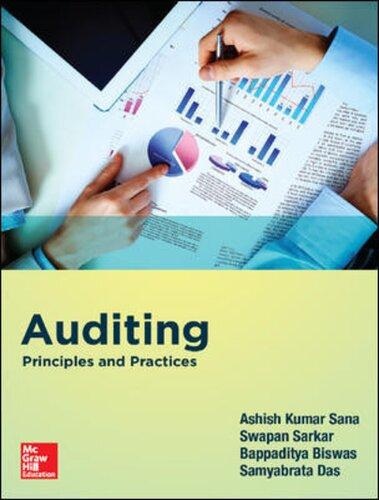The Trajectory of Global Education Policy: Community-Based Management in El Salvador and the Global Reform Agenda 1st Edition D. Brent Edwards Jr. (Auth.)
https://ebookmass.com/product/the-trajectory-of-global-educationpolicy-community-based-management-in-el-salvador-and-the-globalreform-agenda-1st-edition-d-brent-edwards-jr-auth/
ebookmass.com
Bagels, Schmears, and a Nice Piece of Fish Cathy Barrow
https://ebookmass.com/product/bagels-schmears-and-a-nice-piece-offish-cathy-barrow/
ebookmass.com
Commercial Aviation Safety, Sixth Edition
https://ebookmass.com/product/commercial-aviation-safety-sixthedition/
ebookmass.com
Retrosynthesis in the Manufacture of Generic Drugs Pedro Paulo Santos
https://ebookmass.com/product/retrosynthesis-in-the-manufacture-ofgeneric-drugs-pedro-paulo-santos/
ebookmass.com
Strategies and Models for Teachers: Teaching Content and Thinking Skills 6th Edition Paul Eggen And Don Kauchak https://ebookmass.com/product/strategies-and-models-for-teachersteaching-content-and-thinking-skills-6th-edition-paul-eggen-and-donkauchak/
ebookmass.com
Auditing: Principles and Practices 1st Edition Ashish Kumar Sana
https://ebookmass.com/product/auditing-principles-and-practices-1stedition-ashish-kumar-sana/
ebookmass.com
disciplineswhowishtousestatisticallearningtoolstoanalyzetheirdata. Itcanbeusedasatextbookforacoursespanningoneortwosemesters. Wewouldliketothankseveralreadersforvaluablecommentsonpreliminarydraftsofthisbook:PallaviBasu,AlexandraChouldechova,Patrick Danaher,WillFithian,LuellaFu,SamGross,MaxGrazierG’Sell,CourtneyPaulson,XinghaoQiao,ElisaSheng,NoahSimon,KeanMingTan, andXinLuTan. It’stoughtomakepredictions,especiallyaboutthefuture.
-YogiBerra
LosAngeles,USAGarethJames Seattle,USADanielaWitten PaloAlto,USATrevorHastie PaloAlto,USARobertTibshirani
2.1.1WhyEstimate f ?
2.1.2HowDoWeEstimate f ?
2.1.3TheTrade-OffBetweenPredictionAccuracy andModelInterpretability
2.1.4SupervisedVersusUnsupervisedLearning
2.1.5RegressionVersusClassificationProblems
2.2AssessingModelAccuracy
2.2.1MeasuringtheQualityofFit
2.2.2TheBias-VarianceTrade-Off
2.2.3TheClassificationSetting
2.3Lab:IntroductiontoR
2.3.1BasicCommands
2.3.2Graphics
2.3.3IndexingData
2.3.4LoadingData
2.3.5AdditionalGraphicalandNumericalSummaries
2.4Exercises
3LinearRegression 59
3.1SimpleLinearRegression ...................61
3.1.1EstimatingtheCoefficients ..............61
3.1.2AssessingtheAccuracyoftheCoefficient Estimates ........................63
3.1.3AssessingtheAccuracyoftheModel .........68
3.2MultipleLinearRegression ..................71
3.2.1EstimatingtheRegressionCoefficients ........72
3.2.2SomeImportantQuestions ..............75
3.3OtherConsiderationsintheRegressionModel ........82
3.3.1QualitativePredictors .................82
3.3.2ExtensionsoftheLinearModel ............86
3.3.3PotentialProblems ...................92
3.4TheMarketingPlan ......................102
3.5ComparisonofLinearRegressionwith K -Nearest Neighbors ............................104
3.6Lab:LinearRegression .....................109
3.6.1Libraries .........................109
3.6.2SimpleLinearRegression
3.6.3MultipleLinearRegression ..............113
3.6.4InteractionTerms ...................115
3.6.5Non-linearTransformationsofthePredictors ....115
3.6.6QualitativePredictors .................117
3.6.7WritingFunctions ...................119
3.7Exercises ............................120
4Classification
4.1AnOverviewofClassification
4.2WhyNotLinearRegression?
4.3LogisticRegression .......................130
4.3.1TheLogisticModel ...................131
4.3.2EstimatingtheRegressionCoefficients ........133
4.3.3MakingPredictions ...................134
4.3.4MultipleLogisticRegression ..............135
4.3.5LogisticRegressionfor >2ResponseClasses .....137
4.4LinearDiscriminantAnalysis .................138
4.4.1UsingBayes’TheoremforClassification .......138
4.4.2LinearDiscriminantAnalysisfor p =1 ........139
4.4.3LinearDiscriminantAnalysisfor p>1 ........142
4.4.4QuadraticDiscriminantAnalysis ...........149
4.5AComparisonofClassificationMethods ...........151
4.6Lab:LogisticRegression,LDA,QDA,andKNN ......154
4.6.1TheStockMarketData ................154
4.6.2LogisticRegression ...................156
4.6.3LinearDiscriminantAnalysis .............161
4.6.4QuadraticDiscriminantAnalysis ...........163
4.6.5 K -NearestNeighbors ..................163
4.6.6AnApplicationtoCaravanInsuranceData .....165
4.7Exercises ............................168
5ResamplingMethods
5.1Cross-Validation ........................176
5.1.1TheValidationSetApproach
5.1.2Leave-One-OutCross-Validation
5.1.3 k -FoldCross-Validation ................181
5.1.4Bias-VarianceTrade-Offfor k -Fold Cross-Validation ....................183
5.1.5Cross-ValidationonClassificationProblems .....184
5.2TheBootstrap .........................187
5.3Lab:Cross-ValidationandtheBootstrap ...........190
5.3.1TheValidationSetApproach .............191
5.3.2Leave-One-OutCross-Validation ...........192
5.3.3 k -FoldCross-Validation ................193
5.3.4TheBootstrap .....................194
5.4Exercises ............................197
6LinearModelSelectionandRegularization 203
6.1SubsetSelection ........................205
6.1.1BestSubsetSelection
6.1.2StepwiseSelection ...................207
6.1.3ChoosingtheOptimalModel
6.2ShrinkageMethods .......................214
6.2.1RidgeRegression ....................215
6.2.2TheLasso ........................219
6.2.3SelectingtheTuningParameter ............227
6.3DimensionReductionMethods ................228
6.3.1PrincipalComponentsRegression ...........230
6.3.2PartialLeastSquares .................237
6.4ConsiderationsinHighDimensions ..............238
6.4.1High-DimensionalData ................238
6.4.2WhatGoesWronginHighDimensions? .......239
6.4.3RegressioninHighDimensions ............241
6.4.4InterpretingResultsinHighDimensions .......243
6.5Lab1:SubsetSelectionMethods ...............244
6.5.1BestSubsetSelection .................244
6.5.2ForwardandBackwardStepwiseSelection ......247
6.5.3ChoosingAmongModelsUsingtheValidation SetApproachandCross-Validation ..........248
10.5Lab2:Clustering ........................404
10.5.1 K -MeansClustering ..................404
10.5.2HierarchicalClustering .................406
10.6Lab3:NCI60DataExample .................407
10.6.1PCAontheNCI60Data ...............408
10.6.2ClusteringtheObservationsoftheNCI60Data ...410
10.7Exercises ............................413
1 Introduction AnOverviewofStatisticalLearning Statisticallearning referstoavastsetoftoolsfor understandingdata.These toolscanbeclassifiedas supervised or unsupervised.Broadlyspeaking, supervisedstatisticallearninginvolvesbuildingastatisticalmodelforpredicting,orestimating,an output basedononeormore inputs.Problemsof thisnatureoccurinfieldsasdiverseasbusiness,medicine,astrophysics,and publicpolicy.Withunsupervisedstatisticallearning,thereareinputsbut nosupervisingoutput;neverthelesswecanlearnrelationshipsandstructurefromsuchdata.Toprovideanillustrationofsomeapplicationsof statisticallearning,webrieflydiscussthreereal-worlddatasetsthatare consideredinthisbook.
WageData Inthisapplication(whichwerefertoasthe Wage datasetthroughoutthis book),weexamineanumberoffactorsthatrelatetowagesforagroupof malesfromtheAtlanticregionoftheUnitedStates.Inparticular,wewish tounderstandtheassociationbetweenanemployee’s age and education,as wellasthecalendar year,onhis wage.Consider,forexample,theleft-hand panelofFigure 1.1,whichdisplays wage versus age foreachoftheindividualsinthedataset.Thereisevidencethat wage increaseswith age butthen decreasesagainafterapproximatelyage60.Theblueline,whichprovides anestimateoftheaverage wage foragiven age,makesthistrendclearer.
G.Jamesetal., AnIntroductiontoStatisticalLearning:withApplicationsinR, SpringerTextsinStatistics,DOI10.1007/978-1-4614-7138-7 1,
FIGURE1.3. Wefitaquadraticdiscriminantanalysismodeltothesubset ofthe Smarket datacorrespondingtothe2001–2004timeperiod,andpredicted theprobabilityofastockmarketdecreaseusingthe2005data.Onaverage,the predictedprobabilityofdecreaseishigherforthedaysinwhichthemarketdoes decrease.Basedontheseresults,weareabletocorrectlypredictthedirectionof movementinthemarket60%ofthetime.
GeneExpressionData Theprevioustwoapplicationsillustratedatasetswithbothinputand outputvariables.However,anotherimportantclassofproblemsinvolves situationsinwhichweonlyobserveinputvariables,withnocorresponding output.Forexample,inamarketingsetting,wemighthavedemographic informationforanumberofcurrentorpotentialcustomers.Wemaywishto understandwhichtypesofcustomersaresimilartoeachotherbygrouping individualsaccordingtotheirobservedcharacteristics.Thisisknownasa clustering problem.Unlikeinthepreviousexamples,herewearenottrying topredictanoutputvariable.
WedevoteChapter 10 toadiscussionofstatisticallearningmethods forproblemsinwhichnonaturaloutputvariableisavailable.Weconsider the NCI60 dataset,whichconsistsof6,830geneexpressionmeasurements foreachof64cancercelllines.Insteadofpredictingaparticularoutput variable,weareinterestedindeterminingwhethertherearegroups,or clusters,amongthecelllinesbasedontheirgeneexpressionmeasurements. Thisisadifficultquestiontoaddress,inpartbecausetherearethousands ofgeneexpressionmeasurementsper cellline,makingithardtovisualize thedata.
Theleft-handpanelofFigure 1.4 addressesthisproblembyrepresentingeachofthe64celllinesusingjusttwonumbers, Z1 and Z2 .These arethefirsttwo principalcomponents ofthedata,whichsummarizethe 6, 830expressionmeasurementsforeachcelllinedowntotwonumbersor dimensions.Whileitislikelythatthisdimensionreductionhasresultedin
learningwasstartingtoexplode.ESLprovidedoneofthefirstaccessible andcomprehensiveintroductionstothetopic.
SinceESLwasfirstpublished,thefieldofstatisticallearninghascontinuedtoflourish.Thefield’sexpansionhastakentwoforms.Themost obviousgrowthhasinvolvedthedevelopmentofnewandimprovedstatisticallearningapproachesaimedatansweringarangeofscientificquestions acrossanumberoffields.However,thefieldofstatisticallearninghas alsoexpandeditsaudience.Inthe1990s,increasesincomputationalpower generatedasurgeofinterestinthefieldfromnon-statisticianswhowere eagertousecutting-edgestatisticaltoolstoanalyzetheirdata.Unfortunately,thehighlytechnicalnatureoftheseapproachesmeantthattheuser communityremainedprimarilyrestrictedtoexpertsinstatistics,computer science,andrelatedfieldswiththetraining(andtime)tounderstandand implementthem.
Inrecentyears,newandimprovedsoftwarepackageshavesignificantly easedtheimplementationburdenformanystatisticallearningmethods. Atthesametime,therehasbeengrowingrecognitionacrossanumberof fields,frombusinesstohealthcaretogeneticstothesocialsciencesand beyond,thatstatisticallearningisapowerfultoolwithimportantpractical applications.Asaresult,thefieldhasmovedfromoneofprimarilyacademic interesttoamainstreamdiscipline, withanenormouspotentialaudience. Thistrendwillsurelycontinuewiththeincreasingavailabilityofenormous quantitiesofdataandthesoftwaretoanalyzeit.
Thepurposeof AnIntroductiontoStatisticalLearning (ISL)istofacilitatethetransitionofstatisticallearningfromanacademictoamainstream field.ISLisnotintendedtoreplaceESL,whichisafarmorecomprehensivetextbothintermsofthenumberofapproachesconsideredandthe depthtowhichtheyareexplored.WeconsiderESLtobeanimportant companionforprofessionals(withgraduatedegreesinstatistics,machine learning,orrelatedfields)whoneedtounderstandthetechnicaldetails behindstatisticallearningapproaches.However,thecommunityofusersof statisticallearningtechniqueshasexpandedtoincludeindividualswitha widerrangeofinterestsandbackgrounds.Therefore,webelievethatthere isnowaplaceforalesstechnicalandmoreaccessibleversionofESL.
Inteachingthesetopicsovertheyears,wehavediscoveredthattheyare ofinteresttomaster’sandPhDstudentsinfieldsasdisparateasbusiness administration,biology,andcomputerscience,aswellastoquantitativelyorientedupper-divisionundergraduates.Itisimportantforthisdiverse grouptobeabletounderstandthemodels,intuitions,andstrengthsand weaknessesofthevariousapproaches.Butforthisaudience,manyofthe technicaldetailsbehindstatisticallearningmethods,suchasoptimizationalgorithmsandtheoreticalproperties,arenotofprimaryinterest. Webelievethatthesestudentsdonotneedadeepunderstandingofthese aspectsinordertobecomeinformedus ersofthevariousmethodologies,and
inordertocontributetotheirchosenfieldsthroughtheuseofstatistical learningtools.
ISLRisbasedonthefollowingfourpremises.
1. Manystatisticallearningmethodsarerelevantandusefulinawide rangeofacademicandnon-academicdisciplines,beyondjustthestatisticalsciences. Webelievethatmanycontemporarystatisticallearningproceduresshould,andwill,becomeaswidelyavailableandused asiscurrentlythecaseforclassicalmethodssuchaslinearregression.Asaresult,ratherthanattemptingtoconsidereverypossible approach(animpossibletask),wehaveconcentratedonpresenting themethodsthatwebelievearemostwidelyapplicable.
2. Statisticallearningshouldnotbeviewedasaseriesofblackboxes. No singleapproachwillperformwellinallpossibleapplications.Withoutunderstandingallofthecogsinsidethebox,ortheinteraction betweenthosecogs,itisimpossibletoselectthebestbox.Hence,we haveattemptedtocarefullydescribethemodel,intuition,assumptions,andtrade-offsbehindeachofthemethodsthatweconsider.
3. Whileitisimportanttoknowwhatjobisperformedbyeachcog,it isnotnecessarytohavetheskillstoconstructthemachineinsidethe box! Thus,wehaveminimizeddiscussionoftechnicaldetailsrelated tofittingproceduresandtheoreticalproperties.Weassumethatthe readeriscomfortablewithbasic mathematicalconcepts,butwedo notassumeagraduatedegreeinthemathematicalsciences.Forinstance,wehavealmostcompletelyavoidedtheuseofmatrixalgebra, anditispossibletounderstandtheentirebookwithoutadetailed knowledgeofmatricesandvectors.
4. Wepresumethatthereaderisinterestedinapplyingstatisticallearningmethodstoreal-worldproblems. Inordertofacilitatethis,aswell astomotivatethetechniquesdiscussed,wehavedevotedasection withineachchapterto R computerlabs.Ineachlab,wewalkthe readerthrougharealisticapplicationofthemethodsconsideredin thatchapter.Whenwehavetaughtthismaterialinourcourses, wehaveallocatedroughlyone-thirdofclassroomtimetoworking throughthelabs,andwehavefoundthemtobeextremelyuseful. Manyofthelesscomputationally-orientedstudentswhowereinitiallyintimidatedby R’scommandlevelinterfacegotthehangof thingsoverthecourseofthequarterorsemester.Wehaveused R becauseitisfreelyavailableandispowerfulenoughtoimplementall ofthemethodsdiscussedinthebook.Italsohasoptionalpackages thatcanbedownloadedtoimplementliterallythousandsofadditionalmethods.Mostimportantly, R isthelanguageofchoicefor academicstatisticians,andnewapproachesoftenbecomeavailablein
R yearsbeforetheyareimplementedincommercialpackages.However,thelabsinISLareself-contained,andcanbeskippedifthe readerwishestouseadifferentsoftwarepackageordoesnotwishto applythemethodsdiscussedtoreal-worldproblems.
WhoShouldReadThisBook? Thisbookisintendedforanyonewhoisinterestedinusingmodernstatisticalmethodsformodelingandpredictionfromdata.Thisgroupincludes scientists,engineers,dataanalysts,or quants,butalsolesstechnicalindividualswithdegreesinnon-quantitativefieldssuchasthesocialsciencesor business.Weexpectthatthereaderwillhavehadatleastoneelementary courseinstatistics.Backgroundinlinearregressionisalsouseful,though notrequired,sincewereviewthekeyconceptsbehindlinearregressionin Chapter 3.Themathematicallevelofthisbookismodest,andadetailed knowledgeofmatrixoperationsisnotrequired.Thisbookprovidesanintroductiontothestatisticalprogramminglanguage R.Previousexposure toaprogramminglanguage,suchas MATLAB or Python,isusefulbutnot required.
Wehavesuccessfullytaughtmaterialatthisleveltomaster’sandPhD studentsinbusiness,computerscience,biology,earthsciences,psychology, andmanyotherareasofthephysicalandsocialsciences.Thisbookcould alsobeappropriateforadvancedundergraduateswhohavealreadytaken acourseonlinearregression.Inthe contextofamoremathematically rigorouscourseinwhichESLservesastheprimarytextbook,ISLcould beusedasasupplementarytextforteachingcomputationalaspectsofthe variousapproaches.
NotationandSimpleMatrixAlgebra Choosingnotationforatextbookisalwaysadifficulttask.Forthemost partweadoptthesamenotationalconventionsasESL.
Wewilluse n torepresentthenumberofdistinctdatapoints,orobservations,inoursample.Wewilllet p denotethenumberofvariablesthatare availableforuseinmakingpredictions.Forexample,the Wage datasetconsistsof12variablesfor3,000people,sowehave n =3,000observationsand p =12variables(suchas year, age, wage,andmore).Notethatthroughout thisbook,weindicatevariablenamesusingcoloredfont: VariableName. Insomeexamples, p mightbequitelarge,suchasontheorderofthousandsorevenmillions;thissituationarisesquiteoften,forexample,inthe analysisofmodernbiologicaldataorweb-basedadvertisingdata.
of A and B isdenoted AB.The(i,j )thelementof AB iscomputedby multiplyingeachelementofthe ithrowof A bythecorrespondingelement ofthe j thcolumnof B.Thatis,(AB)ij = d k=1 aik bkj .Asanexample, consider
Notethatthisoperationproducesan r × s matrix.Itisonlypossibleto compute AB ifthenumberofcolumnsof A isthesameasthenumberof rowsof B.
OrganizationofThisBook Chapter 2 introducesthebasicterminologyandconceptsbehindstatisticallearning.Thischapteralsopresentsthe K -nearestneighbor classifier,a verysimplemethodthatworkssurprisinglywellonmanyproblems.Chapters 3 and 4 coverclassicallinearmethodsforregressionandclassification. Inparticular,Chapter 3 reviews linearregression,thefundamentalstartingpointforallregressionmethods.InChapter 4 wediscusstwoofthe mostimportantclassicalclassificationmethods, logisticregression and lineardiscriminantanalysis. Acentralprobleminallstatisticallearningsituationsinvolveschoosing thebestmethodforagivenapplication.Hence,inChapter 5 weintroduce cross-validation andthe bootstrap,whichcanbeusedtoestimatethe accuracyofanumberofdifferentmethodsinordertochoosethebestone. Muchoftherecentresearchinstatisticallearninghasconcentratedon non-linearmethods.However,linearmethodsoftenhaveadvantagesover theirnon-linearcompetitorsintermsofinterpretabilityandsometimesalso accuracy.Hence,inChapter 6 weconsiderahostoflinearmethods,both classicalandmoremodern,whichofferpotentialimprovementsoverstandardlinearregression.Theseinclude stepwiseselection, ridgeregression, principalcomponentsregression, partialleastsquares,andthe lasso. Theremainingchaptersmoveintotheworldofnon-linearstatistical learning.WefirstintroduceinChapter 7 anumberofnon-linearmethods thatworkwellforproblemswithasingleinputvariable.Wethenshowhow thesemethodscanbeusedtofitnon-linear additive modelsforwhichthere ismorethanoneinput.InChapter 8,weinvestigate tree-basedmethods, including bagging, boosting,and randomforests. Supportvectormachines, asetofapproachesforperformingbothlinearandnon-linearclassification,
NameDescription
Auto Gasmileage,horsepower,andotherinformationforcars.
Boston HousingvaluesandotherinformationaboutBostonsuburbs.
Caravan Informationaboutindividualsofferedcaravaninsurance.
Carseats Informationaboutcarseatsalesin400stores.
College Demographiccharacteristics,tuition,andmoreforUSAcolleges.
Default Customerdefaultrecordsforacreditcardcompany.
Hitters Recordsandsalariesforbaseballplayers.
Khan Geneexpressionmeasurementsforfourcancertypes. NCI60 Geneexpressionmeasurementsfor64cancercelllines.
OJ SalesinformationforCitrusHillandMinuteMaidorangejuice.
Portfolio Pastvaluesoffinancialassets,foruseinportfolioallocation.
Smarket DailypercentagereturnsforS&P500overa5-yearperiod. USArrests Crimestatisticsper100,000residentsin50statesofUSA.
Wage IncomesurveydataformalesincentralAtlanticregionofUSA.
Weekly 1,089weeklystockmarketreturnsfor21years.
TABLE1.1. Alistofdatasetsneededtoperformthelabsandexercisesinthis textbook.Alldatasetsareavailableinthe ISLR library,withtheexceptionof Boston (partof MASS)and USArrests (partofthebase R distribution).
Itcontainsanumberofresources,includingthe R packageassociatedwith thisbook,andsomeadditionaldatasets.
Acknowledgements AfewoftheplotsinthisbookweretakenfromESL:Figures 6.7, 8.3, and 10.12.Allotherplotsarenewtothisbook.
2 StatisticalLearning 2.1WhatIsStatisticalLearning? Inordertomotivateourstudyofstatisticallearning,webeginwitha simpleexample.Supposethatwearestatisticalconsultantshiredbya clienttoprovideadviceonhowtoimprovesalesofaparticularproduct.The Advertising datasetconsistsofthe sales ofthatproductin200different markets,alongwithadvertisingbudgetsfortheproductineachofthose marketsforthreedifferentmedia: TV, radio,and newspaper.Thedataare displayedinFigure 2.1.Itisnotpossibleforourclienttodirectlyincrease salesoftheproduct.Ontheotherhand,theycancontroltheadvertising expenditureineachofthethreemedia.Therefore,ifwedeterminethat thereisanassociationbetweenadvertisingandsales,thenwecaninstruct ourclienttoadjustadvertisingbudgets,therebyindirectlyincreasingsales. Inotherwords,ourgoalistodevelopanaccuratemodelthatcanbeused topredictsalesonthebasisofthethreemediabudgets.
Inthissetting,theadvertisingbudgetsare inputvariables while sales input variable isan outputvariable.Theinputvariablesaretypicallydenotedusingthe output variable symbol X ,withasubscripttodistinguishthem.So X1 mightbethe TV budget, X2 the radio budget,and X3 the newspaper budget.Theinputs gobydifferentnames,suchas predictors, independentvariables, features, predictor independent variable feature orsometimesjust variables.Theoutputvariable—inthiscase, sales—is variable oftencalledthe response or dependentvariable,andistypicallydenoted response dependent variable usingthesymbol Y .Throughoutthisbook,wewillusealloftheseterms interchangeably.
G.Jamesetal., AnIntroductiontoStatisticalLearning:withApplicationsinR, SpringerTextsinStatistics,DOI10.1007/978-1-4614-7138-7 2,
FIGURE2.1. The Advertising dataset.Theplotdisplays sales,inthousands ofunits,asafunctionof TV, radio,and newspaper budgets,inthousandsof dollars,for 200 differentmarkets.Ineachplotweshowthesimpleleastsquares fitof sales tothatvariable,asdescribedinChapter 3.Inotherwords,eachblue linerepresentsasimplemodelthatcanbeusedtopredict sales using TV, radio, and newspaper,respectively.
Moregenerally,supposethatweobserveaquantitativeresponse Y and p differentpredictors, X1 ,X2 ,...,Xp .Weassumethatthereissome relationshipbetween Y and X =(X1 ,X2 ,...,Xp ),whichcanbewritten intheverygeneralform
Here f issomefixedbutunknownfunctionof X1 ,...,Xp ,and isarandom errorterm,whichisindependentof X andhasmeanzero.Inthisformulaerrorterm tion, f representsthe systematic informationthat X providesabout Y systematic
Asanotherexample,considertheleft-handpanelofFigure 2.2,aplotof income versus yearsofeducation for30individualsinthe Income dataset. Theplotsuggeststhatonemightbeabletopredict income using yearsof education.However,thefunction f thatconnectstheinputvariabletothe outputvariableisingeneralunknown.Inthissituationonemustestimate f basedontheobservedpoints.Since Income isasimulateddataset, f is knownandisshownbythebluecurveintheright-handpanelofFigure 2.2. Theverticallinesrepresenttheerrorterms .Wenotethatsomeofthe 30observationslieabovethebluecurveandsomeliebelowit;overall,the errorshaveapproximatelymeanzero.
Ingeneral,thefunction f mayinvolvemorethanoneinputvariable. InFigure 2.3 weplot income asafunctionof yearsofeducation and seniority.Here f isatwo-dimensionalsurfacethatmustbeestimated basedontheobserveddata.






